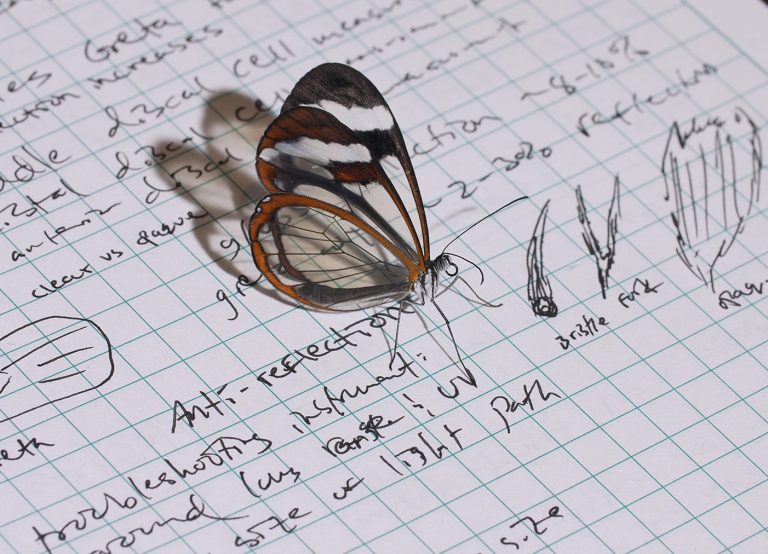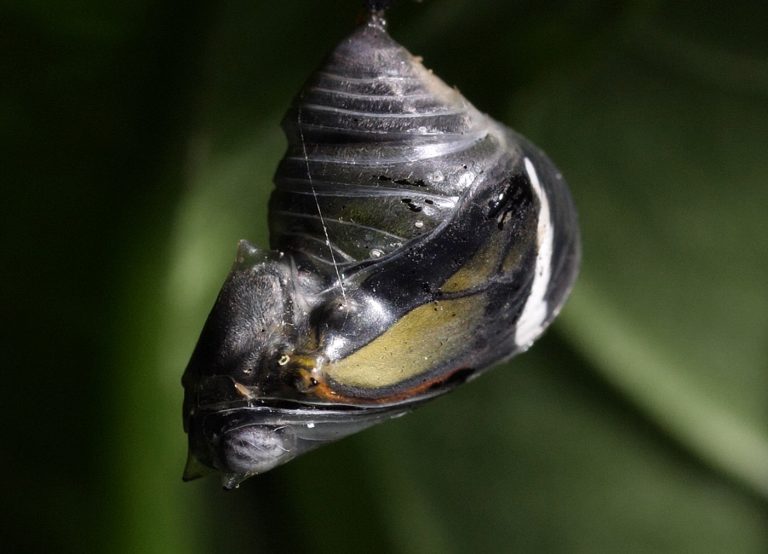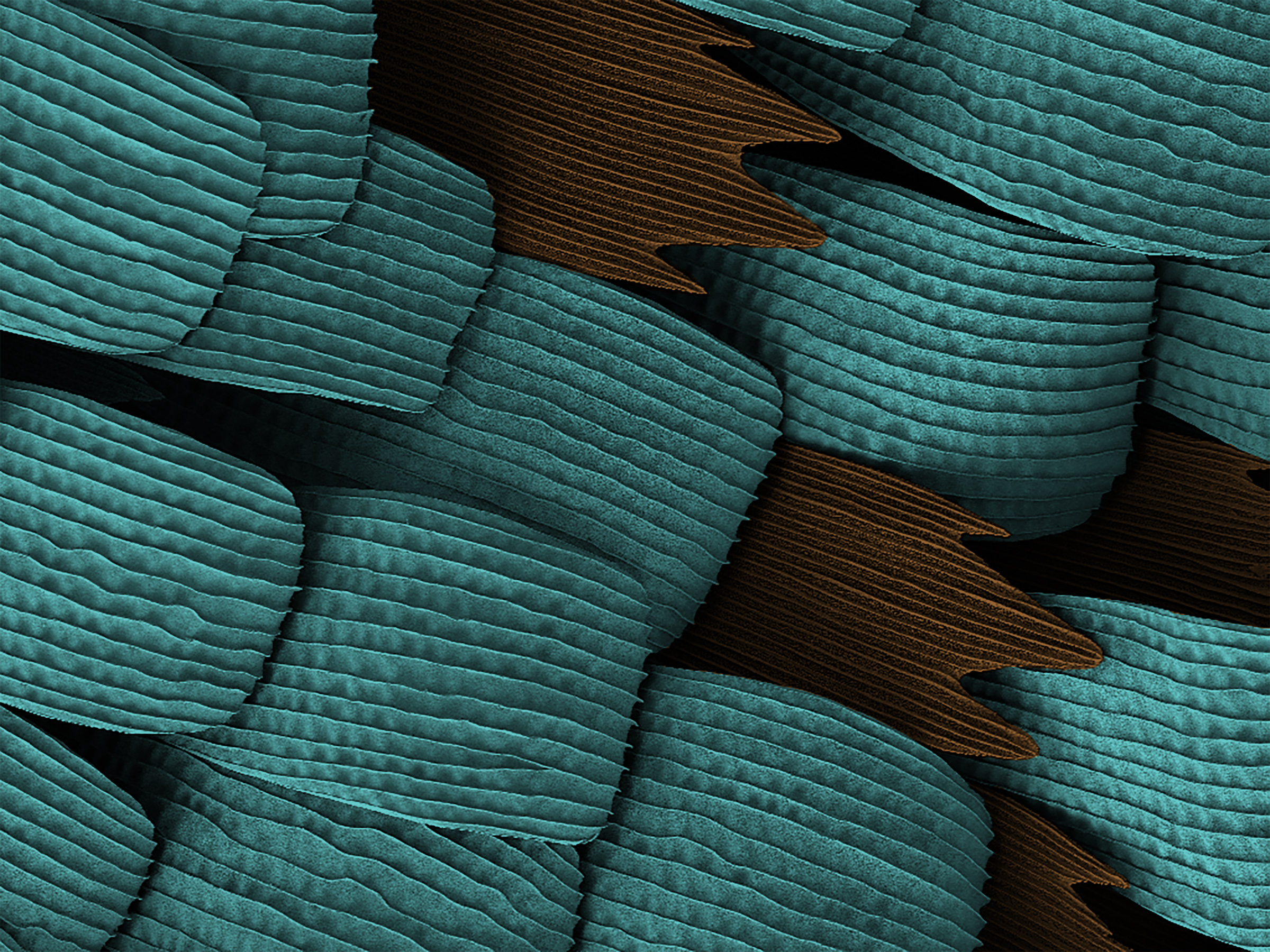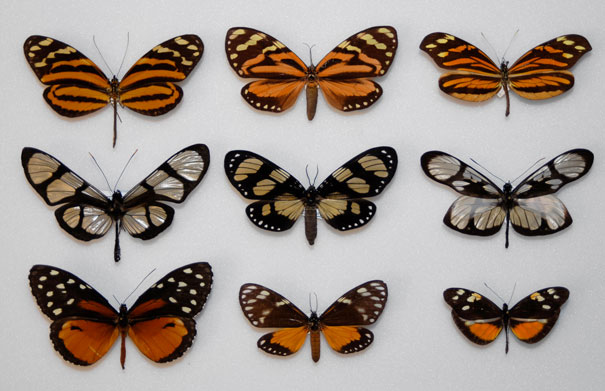Many animals have evolved camouflage tactics for self-defense, but some butterflies and moths have taken it even further: They’ve developed transparent wings, making them almost invisible to predators.
A team led by Marine Biological Laboratory (MBL) scientists studied the development of one such species, the glasswing butterfly, Greta oto, to see through the secrets of this natural stealth technology. Their work was published in the Journal of Experimental Biology.
Although transparent structures in animals are well established, they appear far more often in aquatic organisms. “It’s an interesting biological question because there just aren’t that many transparent organisms on land,” notes lead author Aaron Pomerantz, a PhD candidate in Integrative Biology at the University of California, Berkeley. “So we asked the question, what is the actual developmental basis of how they create their transparent wings?”
Butterfly wings are known for their colorful patterns, created by tiny, overlapping, chitinous scales that reflect or absorb various wavelengths of light to produce colors. Pomerantz says that although scale coloration has been intensively studied, investigating the developmental origins of transparency in land-based butterflies hadn’t been done before. “Transparency is sort of the opposite of color,” he says.
Pomerantz and his co-authors, including his PhD advisor and MBL Director Nipam Patel, were inspired by the work of students in MBL’s Embryology course, in which Patel teaches. “I decided to bring some of the transparent butterfly and moth species I had in my collection, which I never really looked at in detail, to the course and present it as a challenge for the students to look at how these wings were transparent,” Patel says. “A group of students took that on by imaging the wings with various microscopes. And they realized that pretty much any way you could think to make the wing transparent, some butterfly or moth had figured out how to do it. That’s what got us looking in more detail at the development of transparency.”
Building on that work, the researchers used confocal and scanning electron microscopy to construct a developmental time scale of how transparency emerges in Greta oto, from the pupal stage to adulthood. They found that the glasswing butterfly’s wings develop differently than opaque species, with a lower density of precursor scale cells in the areas that will later develop as transparent. At a very early stage, scale growth and morphologies differed, with thin, bristle-like scales developing in transparent regions and flat, round scale morphologies within opaque regions.

Glasswing butterfly (Greta oto) on notes. Credit: Aaron Pomerantz 
Greta oto chrysalis. Credit: Aaron Pomerantz
Citation: Aaron F. Pomerantz, Radwanul H. Siddique, Elizabeth I. Cash, Yuriko Kishi, Charline Pinna, Kasia Hammar, Doris Gomez, Marianne Elias and Nipam H. Patel (2021) Developmental, cellular and biochemical basis of transparency in clearwing butterflies. J. Exp. Biol., DOI: 10.1242/jeb.237917

